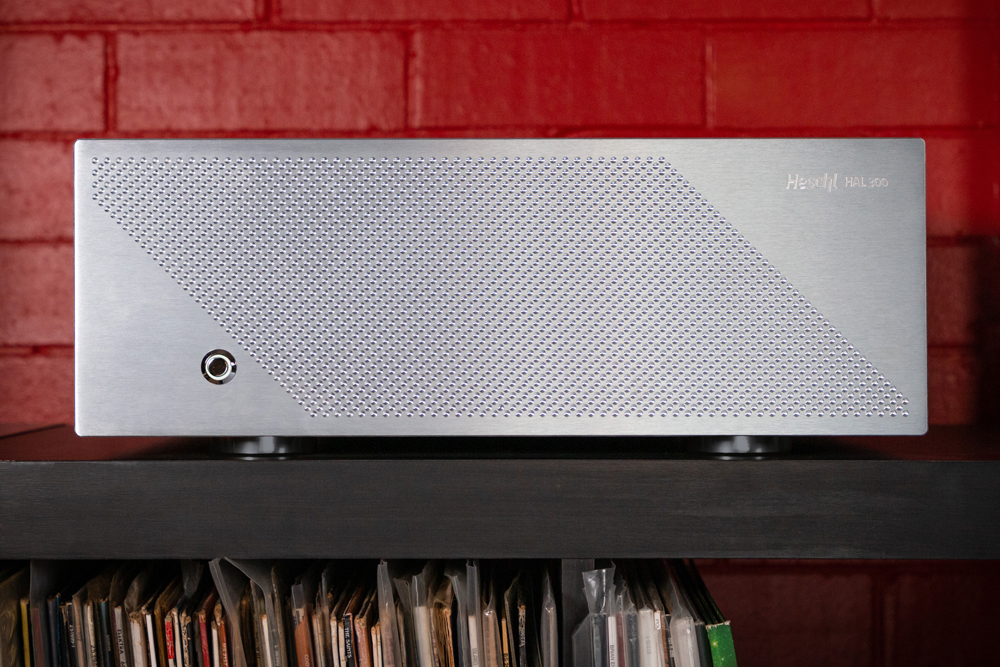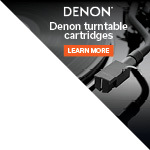Heschl Audio Labs is a young, vibrant and innovative company based in Queensland, Australia. It’s fairly new to the high-end audio scene, at present, they have two products released. Their first was the HAL 350 which is an integrated amplifier that includes an R-2R DAC. This was released back in mid-2018. I had the pleasure of hearing it at an audio club meeting in November 2018 – it sounded very good. As a consequence of various audio shows, Heschl realised a sizeable demand for a power amplifier-only version at a more affordable price point. This product became the HAL 300 which was announced in March 2021 and released shortly afterwards. The HAL 300 is basically the power amp section of the HAL 350 morphed into a new chassis with only minor changes. It is the subject of this review.
What makes it tick?
Heschl Audio Labs (herein called just Heschl) is the product of head electrical engineer and designer Rod Harris. Rod builds all Heschl products himself. Previous to Heschl, Rod worked as a freelance electronics technician, then in the Pro audio space configuring cable interface architecture in studios.
No doubt you’re curious how the company name “Heschl” came about. Allow me a bit of plagiarism here as the Heschl website describes, far better than I could, how the company name originated:
… The Heschl’s gyri is the part of the human brain which processes incoming auditory information. Without it you hear no sound and research has shown a musician’s Heschl’s gyri is typically larger than most – thus having what is called ‘an ear for music’. Giving you what the artist hears is what Heschl Audio Labs is all about. It was only fitting that we celebrated this fact with a name that symbolises what we are trying to achieve!
The circuit design of the HAL 300 is Rod’s own creation. I believe that what makes the HAL 300 super special is its Class-A driver stage which runs two MOSFETs per channel. The input feeds directly to the high voltage (330 volts) Class-A driver stage which feeds into the Class-AB output stage with a gain fixed at 33x. I’m not an electrical engineer but I suspect that this driver stage is what greatly contributes to the open and transparent sound quality.
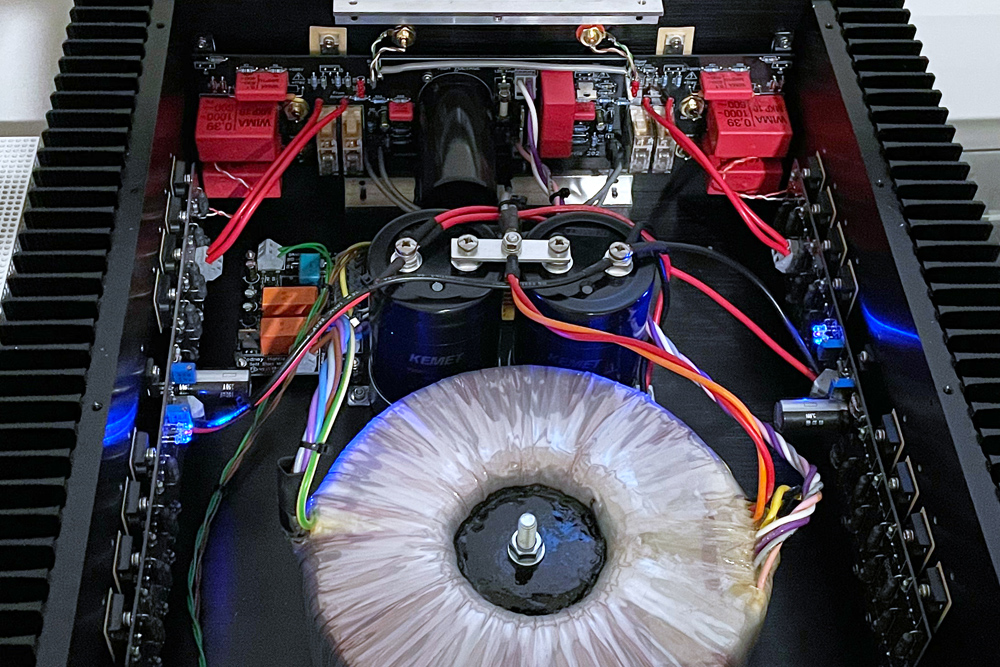
The HAL 300 has a large 1.6 KVA custom wound toroidal transformer, 16 output MOSFETs per channel and 22,000uf 100v high current screw terminal capacitors per channel allowing it to deliver a continuous 300 watts/channel into 8 ohms and 550 watts into 4 ohms. It is stable down to 2 ohms. It has meticulously-matched components and exceptionally clean power supplies. It’s an ultra-wide bandwidth design with high power and dynamic head room.
The HAL 300 has one single ended input (per channel) to the Class-A driver stage. This is a simpler design compared to balanced inputs using XLRs. To make it balanced, it would need to either use a transformer or active circuitry. When asked about this design aspect, Harris said:
The transformer option will limit the bandwidth and the distortion is 10x worse than the driver stage. The active circuitry will need another power supply and more components in the signal path. This would add to the cost of the amplifier. The signal path philosophy in this amp is to have the minimum components to achieve amplification. It is best to use a high-end balanced to unbalanced cable if the preamp or DAC has only balanced outputs.
When run at sane moderate SPLs (75-80 dB), the HAL 300 gets only warm in the heatsinks. So you could probably put it inside a cabinet if you had to. The amplifier was dead quiet when I put my ear up to the speaker tweeters or midrange drivers. However, I did notice some quiet vibration noise from the transformer – this is low enough to not be intrusive.
The amplifier has one pair of good quality binding posts per channel. It is 430 cm wide, by 440 cm in depth (to end of binding posts), by 160 cm high (including feet). Weight is approximately 26 kg, shipping weight is 29 kg.
Careful with that cable Eugene…
I use only balanced XLR cabling in my reference system. When I received the HAL 300 I first used the best pair of RCAs that I had on-hand which, unfortunately, were lower-end models (Wireworld Polaris 5). The sound was OK but somewhat mellow and soft, lacking dynamics and any incisiveness in music that demanded it.
So I borrowed a pair of Vertere HB Pulse RCAs from a good friend. With those interconnects, everything sprang to life – in essence, the amplifier had very good cabling everywhere and everything in the soundscape was exposed. Yes, the Vertere interconnects cost more than the HAL 300 itself! And no, I would never advocate that you need to spend anywhere near that much in such a situation. My point is that this amplifier will most definitely respond to good ancillaries and will stand proud without revealing serious weaknesses. It will reward you for trying different interconnects, speaker cable and power cords. If you have a closet of such cables, I do suggest you try them to see what works best.
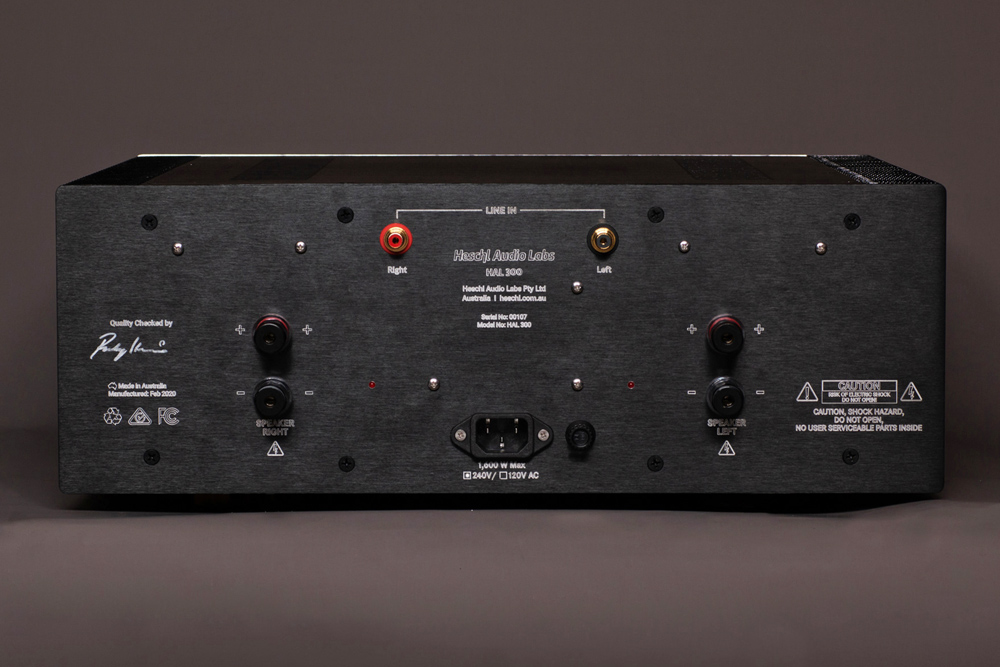
I did most of my listening with the Vertere RCAs interconnects as that allowed me to hear all that the HAL 300 could do. I did switch back to the original cable at times to compare certain tracks. But my listening comments will primarily apply to the Vertere cables.
In my system with the Vertere interconnects, I found the weight in the sound to be on the light side, although quite neutral, I felt it to be very slightly lean. This can be heard across all the frequencies; some people may not notice it immediately because the amplifier’s linearity is so good and the voicing has been done so expertly. But when I swapped out the Vertere interconnects for the Wireworld Polaris 5 interconnects, that slight leanness disappeared. However, the high detail and amazing nuance heard through the Vertere also diminished somewhat. But with a bit of patience and care, you’ll be able to find the right interconnects to produce the sound you’re looking for. I’m not suggesting that you use cables as tone controls, only that there is always synergy when you find the right cables. In my system, the HAL 300 proved to be far superior to what the Wireworld interconnects had to offer.
Getting gyri working…
Rod has engineered the HAL 300 to have a huge soundstage, with good soundstage depth and layering, a sweet sound and decent current to drive most speaker loads. Transients were fast and clear, with good sustain and decay. Reverb trails flowed well into the background. I might be pre-empting what follows below, but I dare say he has succeeded spectacularly.
One of my first listening tracks was the title track of Black Sabbath’s first album, Black Sabbath (24/96 2014 remaster). I wanted to hear how authentically it portrayed the thunder, lightning cracks and rain, and of course the bell peeling through it all on the strike of each hour. I must say it was quite spectacular, very realistic. You could clearly hear the ominous drum rolls in the background. Iommi’s lead guitar was menacing and crystal clear. Ozzie’s vocals were somewhat laid back in the mix, but it sounded right. A most impressive rendition. I started listening to hear just the track beginning, but found myself listening to much more.
Further into ambient sounds… I listened to “These days” from the Jackson Browne album Solo Acoustic Vol.1. The audience noise during the track sounded quite real and was set back in the soundstage as you’d expect. The clapping at the end was quite real as well.
Next thing was to see how well HAL 300 navigated through some complex solo piano. The chosen track was “Keyboard Sonata in D Major, K.29” from the Yevgeny Sudbin album Scarlatti 18 Sonatas (24/96). Its fast and busy pace can easily trip up systems that have any serious faults. The HAL 300 kept up with all the notes… clear, distinct with good left hand solidity. There was no smearing or congestion. Tonality was excellent although very slightly on the lean side, but it didn’t detract from the performance.
I must have been in my ‘timing is most important’ mood… because I then chose music to test that over-used tired term, PRAT. The track “Consider Me Gone (with Sting)” on the Christian McBride album Conversations with Christian (24/44.1) had excellent pace, rhythm and timing. The vocals and guitar comping of Sting was very good while McBride’s bass was the key instrument and came through solid and clear with a delightful woody tone.
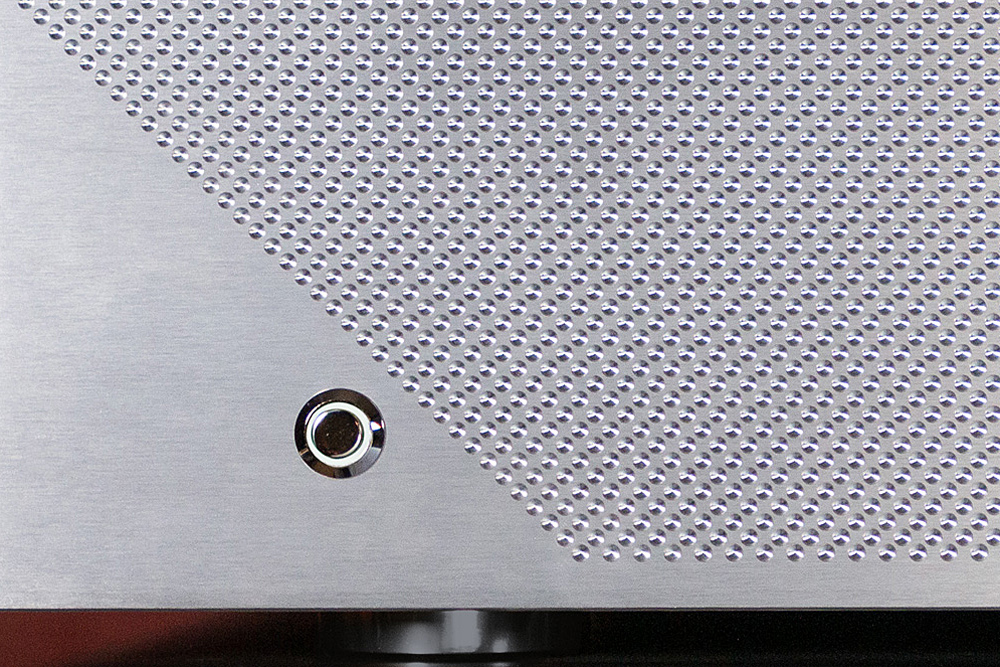
The HAL 300’s slight lightness in tone with the Vertere proved to be a good match for listening to the Cowboy Junkies. Oft times the vocal work of Margo Timmins can be slightly murky – she sings quite softly and is laid back in the mix. The tracks “West of Rome” and “Supernatural” from their album Vol 2 - Demons (The Nomad Series) were quite clear, the vocals came through the mix well with good body and texture.
On many tracks I noticed another great aspect of the amp, and that was in its handling of vocals relative to instrumentation. With some amplifiers, the vocals can sound like they’re front and centre but yet blended into the soundstage with background instruments. The HAL 300 more accurately portrayed the vocals as being layered in the soundstage, separate from surrounding and background instruments, but part of the whole. Even when on the same plane as the instruments, the voice still sounded distinct and layered properly. A good example of this was Carmen Gomes singing “Losing Hand” from her album Carmen Gomes Sings The Blues (24/352.8).
On certain albums, I also noticed a very slight tendency to congeal multi-tracked vocal work. The track “The Mountain” from the album Chants from Another Place (24/44.1) by Jonathan Hulten has lots of vocal work – all his own voice. In places, the multiple background vocals were not quite as separate and distinct compared to the reference amp (albeit a much more expensive one). At times the effect was barely perceptible, so I’m being really picky here. At high volume, the track “Angel” from the Massive Attack album Mezzanine showed some slight congealment as well. It was also slightly noticeable in Donald Fagen’s “Morph the Cat” (24/96) from the album of the same name.
With the Vertere, the track “These Wilder Things” from the Ruth Moody album of the same name allowed the vocal work to come through slightly better than my reference, largely because the slight lightness of tone allowed the voice to be heard better without the bass masking it slightly.
All sonic bliss…?
So far I’ve talked of primarily all the great things about the HAL 300. Does it have any downsides? Well, all audio electronics products have foibles, flaws – the designer tries to get the best possible sound within the budget they are working with. The downsides I heard with the HAL 300 were very minor. In fact some people may not even notice them, even fewer might actually worry about them. Once you listen to the HAL 300 for a while, its sonic character gets stamped in your brain, and you’re a happy chappy listening in bliss (like I was!). It’s when you swap out the amp for another that you’re more likely to notice the differences. Of course, these differences are quite possibly system dependent, you may hear it quite differently. It’s my job to report what I hear in my system. Most importantly, I believe these differences are quite intentional and they are the product of the sound Rod is aiming for.
Firstly, in-keeping with this lightness across the frequencies (with the Vertere cable), the bass was not quite as deep or powerful as I would like. Again, that can be a good thing in many systems, but may not appeal to the ‘head bangers’. The track “Crawlin’ Moon” from the Buddaheads album Howlin’ at the Moon is solidly built around bass and drums. The bass in particular has some deep menacing lines that were somewhat subdued. That said, the track was still immensely enjoyable because the HAL 300 really ‘gets’ the rhythm and pace of the track and even when played loudly it didn’t turn harsh. When heard via the Wireworld interconnects, the overall impact was softened, but the bass was more full and menacing.
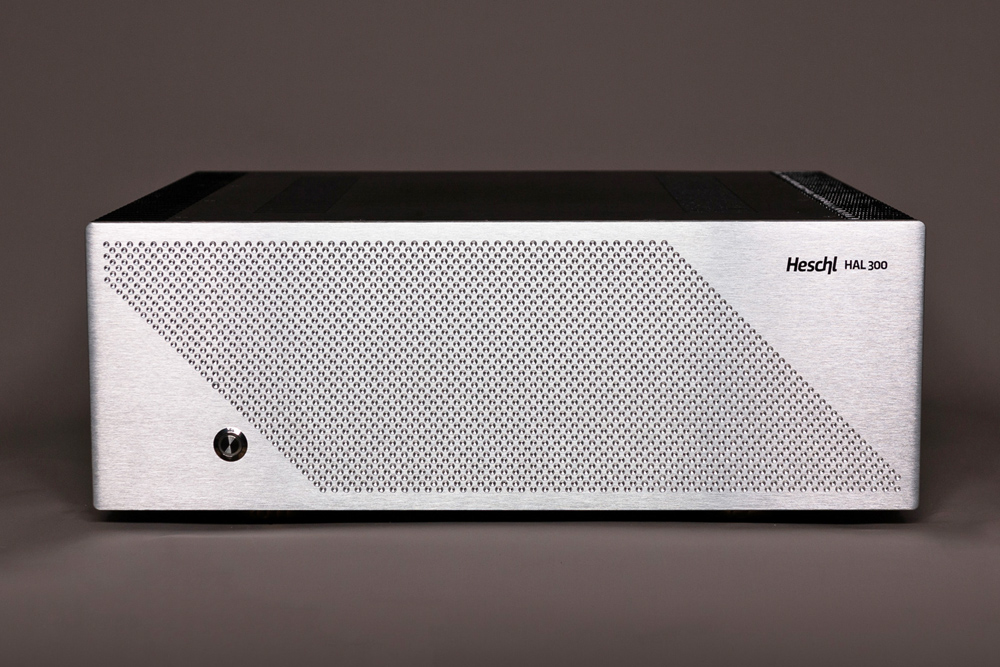
Secondly, I noticed in places that the extreme low-level detail was missing a wee bit (with the Vertere). For example, the birds chirping at the end of the Chris Jones track “Roadhouse and Automobiles” from the album of the same name were less noticeable. Some very quiet brush strokes were a bit lost in the noise floor on the track “One Foot in the Blues” from the Johnny Adam’s album of the same name. And on some older jazz tracks (late 50s, early 60s) you have to listen intently to hear the musicians chatting to themselves at times – no doubt they thought that no one would ever hear them! Of course, you can’t really hear what they are saying, so some people might just consider it to be background noise. When heard via the Wireworld interconnects, this extreme low-level detail was even less noticeable.
Lastly – a very minor gripe – the power switch on the front of the amp is very small. To turn it on and off, you have to push it into the amp by as much as half a centimetre – even when using my little finger, it was scrapping on the sides of the switch indentation. Of course, if you leave the amp on 24/7 then this won’t be a consideration at all for you. But I always switch off amps at night and turn them back on at least 30 minutes to an hour before listening. The only audio electronics I leave on 24/7 is the DAC – like many/most DACs, it benefits a lot by being always on.
Conclusion
I must say it’s awe-inspiring to come across so many Australian companies such as Heschl Audio Labs which make such superb world-class products – I’m happy to say that this is definitely the niche that Heschl belongs in. It would have to be considered the ‘crème de la crème’ within its price range and even considerable higher. I thoroughly enjoyed my time listening to it.
The HAL 300 will enrapture you in the music very quickly and you won’t feel like you’re missing anything. If you’re in the market for a new power amplifier and simply bypass the HAL 300 because you think it isn’t expensive enough to be good, then you’re doing yourself a huge disservice. Give it a listen – it won’t disappoint you. Needless to say, highly recommended!
… Tom Waters
Associated Equipment
- Speakers — PMC MB2 SE speakers with ANTICABLES Level 5 Signature jumper wires
- Amplifier — Gryphon Audio Designs Antileon EVO
- Preamplifier — Trinnov Audio Amethyst
- Sources — Gryphon Mikado Signature CD Player, Mac Mini (running Roon Core), Weiss Medus Reference DAC
- Processor — Trinnov Audio Amethyst
- Cables — ZenSati #1 and #2 interconnects and speaker cables, sILENzIO S/PDIF, Nordost Tyr 2 AES-EBU, AudioQuest Vodka Ethernet cables, Trinity power cords, Viablue X-60 Silver power cords, Synergistic Research Hologram A and D power cords, ANTICABLES Level 3 Reference power cord, Nordost Purple Flare (Figure 8) power cords (for Mac Mini and router).
- Audio Rack — Schroeders and Schroeders, Symposium Ultra custom-made amplifier stands
- Miscellaneous — Nordost Quantum QX4 line purifier, Nordost Quantum QV2 AC line harmonizers, Nordost Quantum QK1 AC Enhancer, Nordost Quantum QB8 power distribution, Townshend Seismic Podiums, dedicated 20 amp power lines, Symposium Rollerblock Jr isolation footers, Symposium shelves, Viablue UFO XL Absorbers, Vicoustics bass traps and diffusers, RealTraps bass traps
Heschl Audio Labs HAL 300 Power Amplifier
Price: AU$9999
Warranty: Three Years
Direct: Heschl Audio Labs
Level 13, 46 Edward St Brisbane, QLD 4000
+61 490 262 966
www.heschl.com.au







